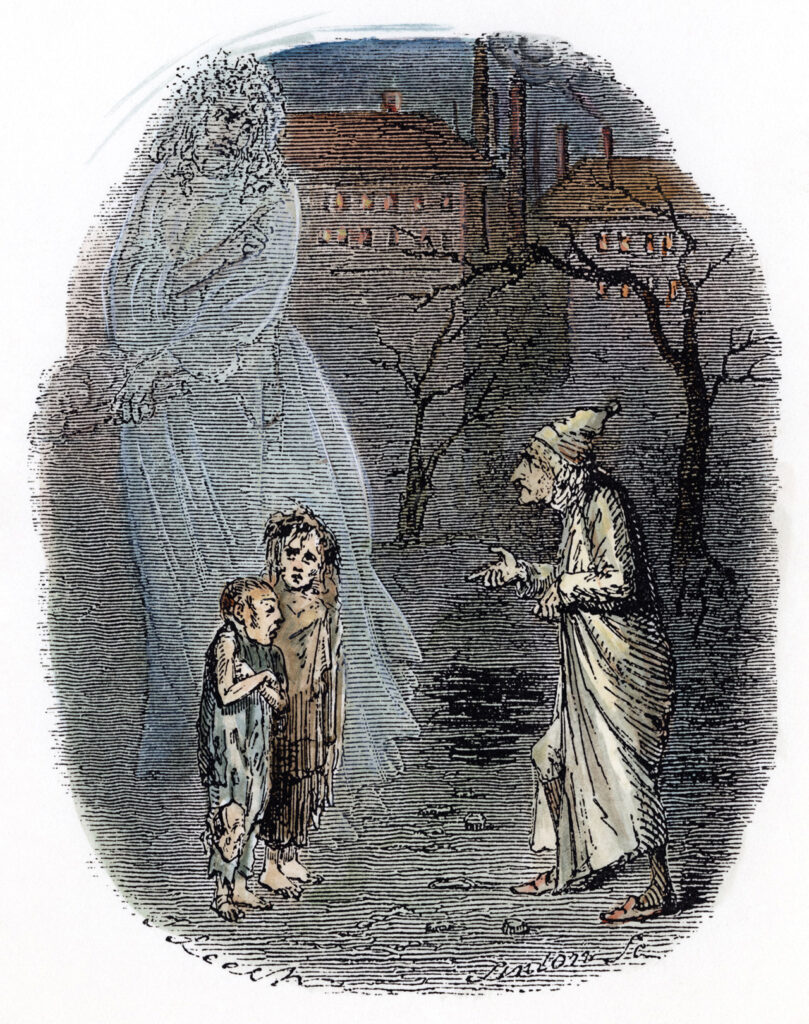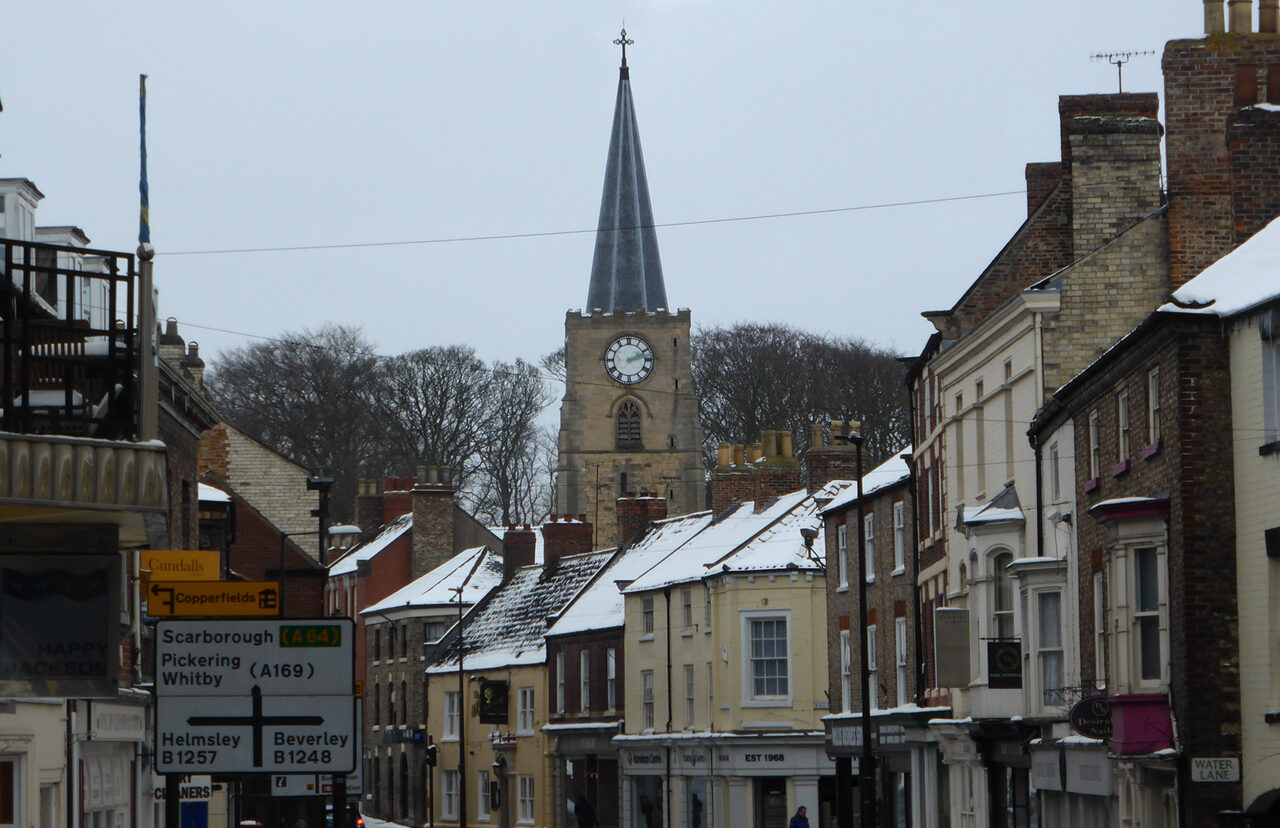Great expectations
Dickens enthusiasts in Yorkshire are hoping to strengthen the author’s links with the county
If there’s one story that’s synonymous with the festive period it’s Charles Dickens’s A Christmas Carol.
Written in just six weeks, the novella was published on 19 December 1843 and had sold out by Christmas Eve. It’s never been out of print since and has inspired countless adaptations through the generations, which is why Dickens is often referred to as the man who created the modern Christmas, but that’s a misconception.
“It’s more that he captured the zeitgeist of Christmas. There was already a movement of people who thought Christmas had become too commercial and lost its real meaning – not only the religious stories but the fact Christmas was a time to help the poor. A lot of that charitable giving had gone,” says Lucinda Hawksley, the great-great-great-granddaughter of Dickens and author of numerous books including Dickens and Christmas.
“In fact, when Dickens first came up with the idea, his publishers thought it was ridiculous and not commercial enough. They wouldn’t cover all of the costs, so Dickens had to. But A Christmas Carol really caught people’s imagination and was an instant success.”
Exploring hope, faith and redemption, A Christmas Carol tells the tale of miserly Ebenezer Scrooge who’s visited by the ghost of Jacob Marley, his former business partner, followed by three spirits – the Ghosts of Christmas Past, Present and Yet to Come – who teach him the error of his ways before he wakes on Christmas Day a changed man.
Although set in Victorian London, the narrative was heavily inspired by the author’s trips to the North of England.
“Dickens had been to Manchester, where his older sister Fanny lived, and was horrified by the poverty he saw. It was around the time people were arriving from Ireland and also coincided with the Industrial Revolution, and starving families were living on the streets. He was so appalled, it inspired him to write A Christmas Carol to expose child poverty,” says Hawksley, highlighting that two main characters in the book are Ignorance and Want who are depicted as waif-like children and appear beside the Ghost of Christmas Present.
“When Scrooge asks who they are, he says they’re mankind’s children. Dickens wanted people to remember them but ironically, they’re the ones often taken out of adaptations. It’s why I was impressed when the Disney film came out [in 2009], as they’d been kept in as angry threatening teenagers.”
Hawksley draws a line from those children to another of Dickens’s characters – Oliver Twist’s vicious antagonist Bill Sikes.
“That was Dickens’s message. If you ignore the child and they don’t have any options, they’re going to grow up angry and become dangerous adults.”
She calls A Christmas Carol Dickens’s “Bob Dylan moment”, likening it to a protest song.
“He wanted his readers to know that they were all Scrooge, that every one of them had walked past starving children, or didn’t think about the poor, or saw them as an annoyance and he really wanted to bring about social change. It’s why it was important for there to be hope at the end. People need to think well, maybe I can do something – it’s not completely hopeless.”
Dickens was an avid traveller, and his “tenacity and stoicism in undertaking so many journeys in his lifetime enabled his understanding of life in those days, and [explain] how his experiences and social comment were related in such variety and detail,” comments Ian R Wray in his book Charles Dickens – The Malton Connection.

Like Hawksley, Wray’s interest in Dickens follows his lineage – he is a descendant of Charles Smithson, a solicitor and one of Dickens’s great friends. When Smithson’s father and brother died, he was forced to leave London and return to his hometown of Malton, the picturesque market town in North Yorkshire, to look after the family’s practice on Chancery Lane.
Coincidentally, Dickens’s brother Alfred also lived in Malton while he worked on the ever-expanding railways in the North.
“Dickens thoroughly enjoyed Smithson’s company, and was known to visit him at his office, He also stayed with him at Easthorpe Hall, which Dickens thought was one of the most beautiful houses in England. Unfortunately, it burned down in the 1960s,” says Linda McCarthy, secretary of Malton’s Charles Dickens Society.
“A lot of people have said Smithson was the inspiration for Scrooge, but that couldn’t be further from the truth because he was known for his kindness,” she adds. “The story I like better is that Dickens was in Edinburgh, in the Canongate Kirkyard, and came upon a gravestone, which read Ebenezer Scroggie. But Dickens was a bit like a magpie and picked up names and ideas from all over the place.”
In many ways, the rural but bustling Malton of today isn’t so different to the place Dickens would have explored almost 200 years ago. The bells of St Leonard’s Church on Church Hill are said to have inspired the chimes that announce the arrival of each spirit in A Christmas Carol, while Smithson’s office is widely believed to have been the template for Scrooge’s Counting House. The red brick building, consisting of just two rooms and a corridor, was a Dickens museum until it closed in 2018 due to lack of funding.
“It was a little gem, a quirky place that you wouldn’t expect to find down an alleyway in a small market town, so it was disappointing,” say McCarthy.
The museum might be gone but there are still plaques by the door referencing the Dickens connection to Smithson, which is irrefutable.
When Smithson died in 1844 at the age of 39, Dickens dedicated a copy of A Christmas Carol to his widow, which mysteriously turned up at a New York auction in 2012. It was Scarborough-born broadcaster Selina Scott who ensured the book’s return to Malton through a huge fundraising effort alongside Clair Challenor-Chadwick, managing director of PR firm Cause UK, who also runs the Malton Dickensian Festival.
“Over the years, we’ve organised performances, street theatre, lectures, competitions and even had a song composed called Song for Malton, which provides a bit of back story between Dickens and the town. It really captures people’s imaginations and is something to celebrate at Christmas time,” she says. “We’ve haven’t been able to organise a festival during Covid, but next year, I’d like to work on getting a team of volunteers and trustees to continue the theatre programming and utilise Malton’s beautiful venues such as the Wesley Centre, a sumptuous Grade II listed chapel where Dickens is said to have given a lecture.”
But for now, her task, she says, is to formalise the links between Dickens and Malton through academic research. The hope is to glean a greater understanding of where Dickens visited and in time create a heritage trail in the county.
“It’s why I’ve commissioned an MA student at York University to do more research in order to tell the story further,” says Chaellenor-Chadwick. “There’s the Brontë link in Haworth and Bram Stoker’s in Whitby. We really want to add to that canon of rich storytelling by saying Dickens needs to be celebrated by Yorkshire as well.”
It’s not just Manchester and Malton that claim to have inspired Dickens.
Preston is said to have provided the source material for the fictional Coketown of his 1854 novel Hard Times. Dickens visited the town during the seven-month textile workers’ strike of 1853, which also inspired Elizabeth Gaskell’s North and South. There he attended a union meeting at the Cockpit on Stoneygate and witnessed thousands of people marching in the streets, of which he wrote: “Neither by night or day was there any interruption to the peace of the streets… I traversed the streets very much, and was, as a stranger, the subject of a little curiosity among the idlers; but I met with no rudeness or ill temper.”
The North East has staked its claim too, with Lucinda Hawksley revealing in her Dickens biography that a clandestine affair with 18-year-old Newcastle actor Nelly Ternan, when he was 45, inspired the character of Estella, the object of Pip’s desires in Great Expectations. A visit to Shaw’s Academy boarding school in Bowes, County Durham, is also believed to have provided inspiration for his 1839 novel Nicholas Nickleby, although it was ultimately set in Yorkshire.
In 1857 Dickens seemingly had a crisis which led him to Cumberland. He wrote to his friend Wilkie Collins that he wanted to “escape myself”, that he was in need of “moors and bleak places” and begged him to come away with him. The pair became lost in the fog at the top of Carrock Fell and Collins sprained his ankle but the trip provided good material for their co-written story The Lazy Tour of Two Idle Apprentices. Yorkshire again drew him back as the journey provided a convenient excuse to travel to Doncaster en route home. Holing Collins up in their accommodation to recover, Dickens spent time with Ternan, who was performing there at the time.
Antonia Charlesworth

Leave a reply
Your email address will not be published.